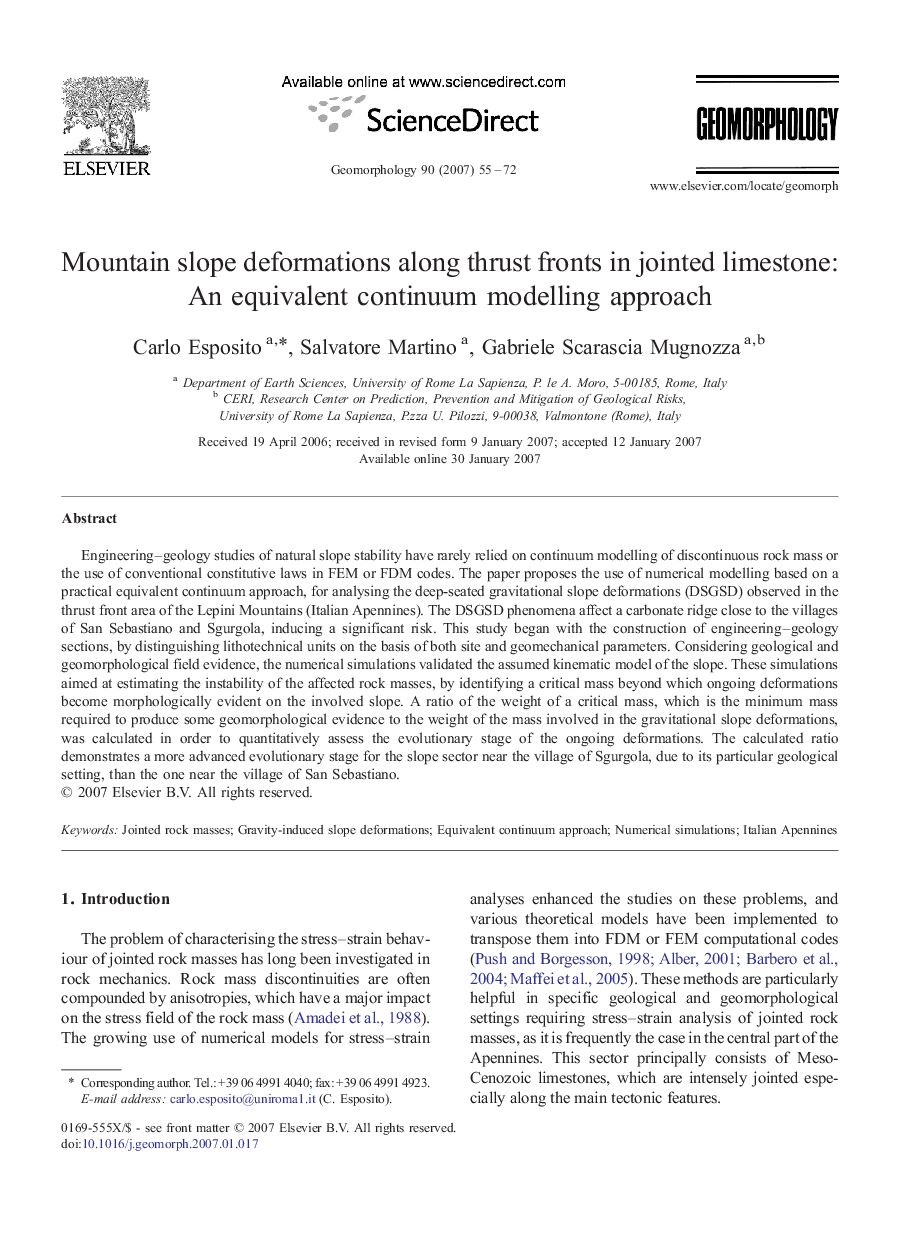| Article ID | Journal | Published Year | Pages | File Type |
|---|---|---|---|---|
| 4687169 | Geomorphology | 2007 | 18 Pages |
Engineering–geology studies of natural slope stability have rarely relied on continuum modelling of discontinuous rock mass or the use of conventional constitutive laws in FEM or FDM codes. The paper proposes the use of numerical modelling based on a practical equivalent continuum approach, for analysing the deep-seated gravitational slope deformations (DSGSD) observed in the thrust front area of the Lepini Mountains (Italian Apennines). The DSGSD phenomena affect a carbonate ridge close to the villages of San Sebastiano and Sgurgola, inducing a significant risk. This study began with the construction of engineering–geology sections, by distinguishing lithotechnical units on the basis of both site and geomechanical parameters. Considering geological and geomorphological field evidence, the numerical simulations validated the assumed kinematic model of the slope. These simulations aimed at estimating the instability of the affected rock masses, by identifying a critical mass beyond which ongoing deformations become morphologically evident on the involved slope. A ratio of the weight of a critical mass, which is the minimum mass required to produce some geomorphological evidence to the weight of the mass involved in the gravitational slope deformations, was calculated in order to quantitatively assess the evolutionary stage of the ongoing deformations. The calculated ratio demonstrates a more advanced evolutionary stage for the slope sector near the village of Sgurgola, due to its particular geological setting, than the one near the village of San Sebastiano.
